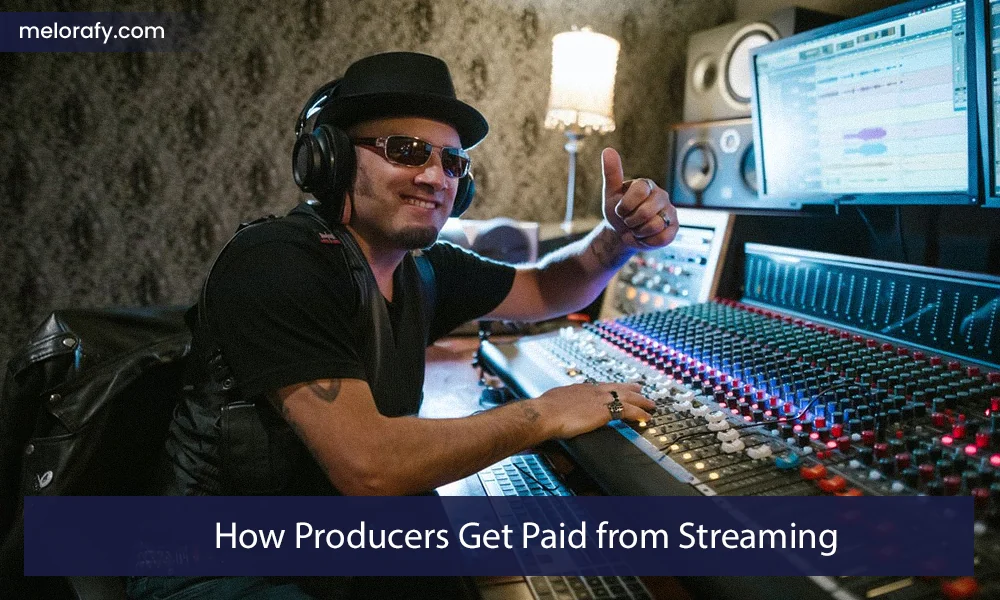
The Digital Revolution: How Producers Get Paid from Streaming
In the age of digital media, streaming platforms have become new venues for content, hosting an ever-expanding library of music, movies, TV shows, and more. As consumers, our appetite for on-demand content is insatiable, but behind every piece of content lies a network of creators and producers. A question often comes up in discussions about digital media: How do producers get paid for streaming? This article of Melorafy demystifies the complexity of payment processes and sheds light on the ways producers monetize their creative output in the streaming era.
The Streaming Ecosystem
Before diving into the specifics of producer payments, it’s essential to understand the streaming ecosystem. Platforms like Spotify, Apple Music, Netflix, and Hulu have transformed how we consume media, relying on subscription models, advertising revenue, and licensing agreements to generate income. At the heart of this ecosystem are the content creators and producers, whose work is the lifeblood of these platforms.
Understanding Producer Roles
Producers play a critical role in the creation of content, overseeing the production process from start to finish. In music, producers might be involved in everything from songwriting to mixing and mastering tracks. In film and television, they’re responsible for managing budgets, hiring talent, and guiding the project’s creative vision. Regardless of the medium, producers invest their time, expertise, and often their own money, into projects with the hope of seeing a return on their investment.
![]()
How Producers Get Paid
The mechanisms for producer payments vary by medium (music, film, television) and depend on several factors, including distribution agreements, ownership rights, and the producer’s role in the project. Here’s a breakdown:
Music Streaming Royalties
For music producers, royalties from streaming platforms are a primary source of income. These royalties are distributed based on licensing agreements between rights holders (often record labels or independent artists) and streaming services. The amount paid per stream is negotiated by these parties and can vary widely. Producers get paid through one of the following arrangements:
- Percentage of Revenue: Many producers negotiate a percentage of the revenue generated from streams. This percentage is often determined by their contract with the artist or label.
- Points System: Some producers earn points (1 point = 1 percent) on an album or track, entitling them to a proportion of the royalties generated from streaming.
- Direct Licensing: Independent producers may license their music directly to streaming platforms, negotiating their own terms for royalty payments.
Film and Television Licensing Fees
In the realm of film and television, producers typically earn money from streaming through licensing fees. When a streaming platform wants to include a movie or TV show in its library, it pays a licensing fee to the content owners. These fees are then distributed among the producers and other stakeholders based on contractual agreements. The specifics can vary greatly, with factors like viewership, critical acclaim, and exclusive rights influencing the fee amount.
![]()
Subscription and Advertising Revenue
Streaming platforms that operate on subscription or advertising models generate income that is shared with content creators and producers. For platforms like YouTube, producers can earn money through ad revenue, with payments based on the number of views and engagement rates. Subscription-based platforms, on the other hand, allocate a portion of their subscription revenue to producers, often based on the popularity and viewership of their content.
The Challenges and Opportunities
While streaming offers producers unprecedented access to global audiences, it also presents challenges. The per-stream payment rates are often criticized for being too low, particularly for music producers. Moreover, the complexity of copyright laws and distribution agreements can make it difficult for producers to navigate their rights and secure fair compensation.
Despite these challenges, the streaming era also offers immense opportunities for producers. Direct-to-consumer platforms enable producers to retain more control over their work and its monetization. Crowdfunding and social media marketing have opened new avenues for independent producers to fund their projects and reach audiences without the need for traditional distribution channels.
![]()
For producers, getting paid from streaming is a multifaceted process that requires a deep understanding of the digital media landscape, copyright laws, and distribution agreements. While challenges exist, the shift towards digital consumption has also democratized content creation, offering producers new ways to monetize their creativity and reach audiences around the world.
As the streaming industry continues to evolve, so too will the mechanisms for producer compensation. By staying informed and adapting to the changing landscape, producers can leverage streaming platforms to not only get paid but also to amplify their creative visions to global audiences.